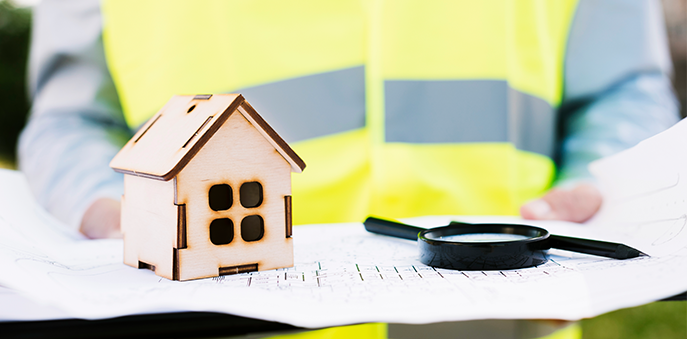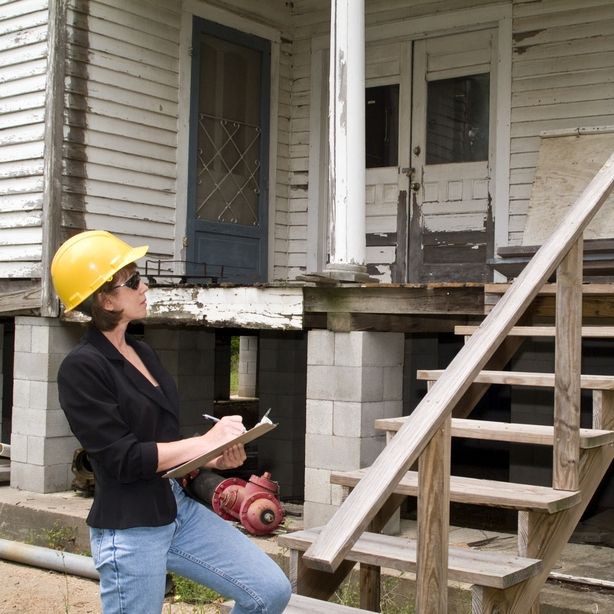Commercial property inspections for office buildings, storage facilities, and shops
Commercial property inspections for office buildings, storage facilities, and shops
Blog Article
What Is Included in a Detailed Building Assessment Process?
An extensive building examination process is essential for safeguarding investments and making certain safety. It encompasses a thorough assessment of architectural honesty, electric systems, plumbing, and heating and cooling devices, to name a few crucial elements. Inspectors perform a complete evaluation of both exterior and indoor elements, identifying possible threats and compliance with industry standards. The resulting report functions as an essential source for current proprietors and prospective customers alike. The specifics of what inspectors prioritize, and the implications of their searchings for, can significantly affect decision-making. What, then, are the most important aspects that can make or break a residential property evaluation?
Review of Residential Or Commercial Property Inspection

The assessment incorporates several crucial areas, consisting of the exterior and interior components, systems such as plumbing and electric, and any type of noticeable structural components (Commercial property inspections). Throughout the process, the examiner records the condition of these elements, trying to find indications of wear, damage, or potential threats
A complete residential property assessment not only aids potential buyers make informed decisions however also aids current owners in understanding essential repair work or maintenance jobs. By providing a detailed record of findings, the assessment enables stakeholders to prioritize problems that may need instant attention or can affect future financial investment.
In addition, an effective assessment process follows developed industry requirements and guidelines, guaranteeing a consistent and trustworthy assessment. Overall, the building assessment procedure is a vital tool in realty transactions, promoting transparency and guarding both customer and seller interests.
Structural Examination

During the examination, professionals evaluate numerous components, including the foundation, framework, walls, and roof systems. They look for indications of settling or shifting, such as cracks in walls or irregular floorings, which can represent underlying issues. The assessment likewise entails taking a look at the quality of building and construction materials and strategies utilized, making certain conformity with building regulations and requirements.
In addition, inspectors may look for indicators of wetness breach, which can lead to wood rot and mold and mildew, additional endangering structural stability. They also evaluate load-bearing components to guarantee they can effectively support the weight of the building and its components.
Inevitably, a comprehensive architectural analysis provides vital understandings for prospective purchasers and house owners, allowing them to make educated decisions relating to residential or commercial property investments and required maintenance. By determining architectural worries early, proprietors can attend to problems proactively, maintaining the lasting worth and safety and security of the property.
Electric System Assessment
A reliable electrical system analysis is vital in the property assessment process, as it reviews the security, functionality, and compliance of a building's electric infrastructure - Phoenix property inspections. This analysis typically incorporates an extensive exam of the main electric panel, circuit breakers, and wiring systems. Examiners seek signs of wear, rust, or damage that might compromise safety
The evaluation includes testing for adequate grounding and bonding, making sure that the electric system is properly linked to prevent electrical shock or fire dangers. Inspectors likewise assess the capacity of the electrical system to manage the existing load, recognizing click to read more any kind of possible overwhelming problems that could bring about failings or blackouts.
Additionally, the assessment checks for the presence of GFCI (Ground Fault Circuit Interrupter) and AFCI (Arc Mistake Circuit Interrupter) gadgets in ideal areas, which are crucial for safeguarding against electrical shocks and protecting against fires. Compliance with neighborhood building ordinance and policies is also confirmed to make sure that any kind of setups or modifications meet security standards.

Pipes and HVAC Checks
Adhering to the electrical system evaluation, the pipes and a/c checks are integral elements of the home evaluation procedure. These assessments make sure that the crucial systems of the home are working properly and safely, consequently safeguarding the investment and wellness of the passengers.
Throughout pipes assessments, professionals assess the condition of pipes, fixtures, and water drainage systems. They look for leakages, rust, and any kind of indications of water damage that could show larger problems. The effectiveness of hot water heater is additionally evaluated to guarantee they fulfill existing standards and provide appropriate warm water supply.
Examiners will certainly examine the functional effectiveness of these systems, guaranteeing that they keep a comfortable indoor atmosphere. Furthermore, the examiner will certainly look for any indicators of wear or potential security threats, such as carbon monoxide leaks in home heating systems.
Outside and Inside Inspections
Outside and interior evaluations are critical aspects of the home assessment process, providing a detailed review recommended you read of a building's problem. The exterior examination includes reviewing structural aspects such as the roofing system, home siding, foundation, and windows. Examiners search for indications of wear, damage, or possible dangers, including water invasion, mold growth, and bug infestations. They additionally evaluate the surrounding landscape, making certain proper water drainage and recognizing any trees or greenery that might threaten the property.
The indoor evaluation concentrates on the condition of living rooms, consisting of walls, flooring, and ceilings. Inspectors check out the functionality of doors, windows, and appliances, while likewise looking for indicators of wetness or structural issues. Electrical systems, plumbing fixtures, and heating and cooling devices are inspected to guarantee they are in working order, compliant with building regulations, and without safety and security dangers.
Both inspections finish in a thorough report that highlights essential findings and recommendations for repair services or additional evaluations. This dual approach makes certain that prospective buyers or proprietors are completely educated regarding the home's strengths and weak points, enabling them to make well-informed choices.
Conclusion
Finally, an extensive property examination procedure encompasses an extensive analysis of architectural stability, electrical systems, pipes, and HVAC systems, alongside in-depth exterior and interior inspections - Best home inspections. By systematically evaluating each essential part, potential safety threats and conformity with industry standards and regional building codes can be identified. The resultant comprehensive report functions as a vital source, equipping property owners and purchasers to make informed choices pertaining to residential property financial investments and maintenance, ultimately improving safety and worth
A thorough residential property assessment process is vital for ensuring and securing financial investments security.During the evaluation, professionals analyze numerous elements, including the foundation, framing, walls, and roof systems.An effective electrical system evaluation is essential in the residential property inspection procedure, as it assesses the security, functionality, and compliance of a structure's electrical infrastructure.Exterior and indoor inspections are important facets of the building assessment process, giving a detailed review of a home's condition.In verdict, a comprehensive residential or commercial property examination process incorporates a substantial assessment of architectural integrity, electrical systems, plumbing, and HVAC systems, together with thorough exterior and explanation indoor inspections.
Report this page